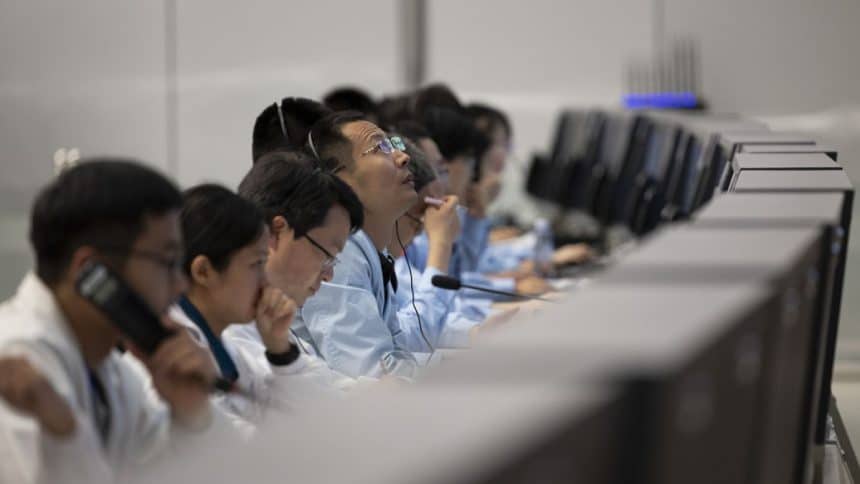A Chinese spacecraft has landed on the far side of the moon amid a growing rivalry with the United States – still the leader in space exploration – and others, including Japan, India and Europe as a whole.
The mission is the sixth in the Chang’e moon exploration programme, which is named after a Chinese moon goddess.
It is the second designed to bring back samples, following the Chang’e 5, which did so from the near side in 2020.
What are China’s aims with their latest visit to the moon?
China’s spacecraft will collect soil and rock samples which could provide insights into differences between the less-explored region and the better-known near side of the moon.
In the current mission, the lander is to use a mechanical arm and a drill to gather up to two kilogrammes of surface and underground material over about two days.
An ascender atop the lander will then take the samples in a metal vacuum container back to another module that is orbiting the moon. The container will be transferred to a re-entry capsule that is due to return to Earth in the deserts of China’s Inner Mongolia region around June 25th.
Missions to the moon’s far side are significantly more difficult because it doesn’t face the earth, requiring a relay satellite to maintain communications. The terrain is also more rugged, with fewer flat areas to land.
China’s craft landed in the South Pole-Aitken Basin, an impact crater created more than four billion years ago and is 13 kilometres deep with a diameter of 2,500 kilometres.
It is the oldest and largest of such craters on the moon, so may provide the earliest information about it, China’s Xinhua News Agency said, adding that the huge impact of the landing may have ejected materials from deep below the surface.
Global space race
China also aims to put a person on the moon before 2030. If it’s successful it would make it the second nation to do so after the United States’s historic landing in 1969.
And now the US is planning to land astronauts on the moon again, although NASA pushed the target date back to 2026 earlier this year.
Whilst there is limited scientific value in putting people on the moon – robots can just as easily collect samples as humans can – there is a lot of national pride in doing so.
Europe is also increasing its presence in space.
Earlier this week, a climate research satellite co-launched by Europe and Japan was sent into orbit.
Designed to study earth’s temperature balance, the SpaceX craft, known as the EarthCARE satellite, lifted off from coastal Vandenberg Space Force Base in California on Tuesday.
The name EarthCARE is short for Earth Cloud Aerosol and Radiation Explorer.
The satellite is equipped with four instruments to study the role of clouds and aerosols – particles suspended in the atmosphere – in reflecting solar radiation back into space and trapping infrared radiation emitted from earth’s surface.
The research is a cooperative project between the European Space Agency and the Japan Aerospace Exploration Agency.
After stage separation, the reusable Falcon 9 first stage booster landed back at Vandenberg, completing its seventh flight.
In contrast, US efforts to use private-sector rockets to launch spacecraft have been repeatedly delayed. Last-minute computer trouble nixed the planned launch of Boeing’s first astronaut flight on Saturday.
Earlier on Saturday, a Japanese billionaire called off his plan to orbit the moon because of uncertainty over the development of a mega rocket by SpaceX. NASA is planning to use the rocket to send its astronauts to the moon.
Euronews










